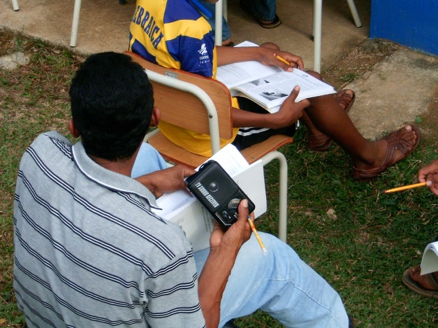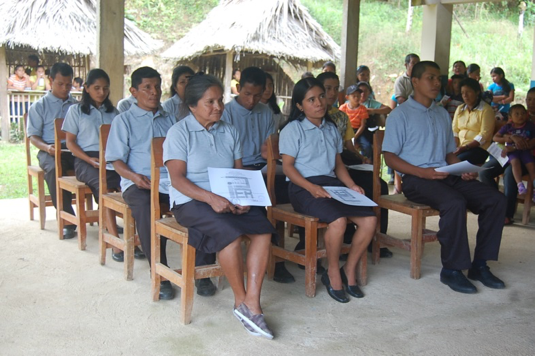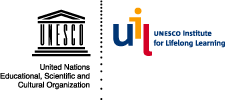El Maestro en Casa (The Teacher at Home)
Country Profile: Panama
| Population | 3.8 million (2012) |
|---|---|
| Official language | Spanish |
| Poverty (population living on less than US $ 1.25 per day) | 2.1% (World Bank 2010) |
| Total expenditure on education as % of GDP | 3.5 |
| Access to primary education, total net enrolment rate (NIR) | 94% |
| Youth literacy rate (15–24 years) | Total: 97.1% |
| Adult literacy rate (15 years and over) | Total: 91.5% |
| Statistical sources |
|
Programme Overview
| Programme Title | El Maestro en Casa (The Teacher at Home) |
|---|---|
| Implementing Organization | Instituto Panameño de Educación Por Radio (IPER) |
| Language of Instruction | Spanish |
| Programme Partners | Private companies, banks, organizations, foundations, private individuals and public government institutions. These include the Sus Buenos Vecinos Foundation, Cable and Wireless, and Global Bank. |
| Annual Programme Costs | US $232,000 |
| Date of Inception | 2001 |
Country Context and Background
Education has improved significantly in Panama in recent years. According to UNESCO’s Education For All 2013–14 Global Monitoring Report, Panama is on target to achieve primary school enrolment of 95%, gender parity in education and an adult literacy rate of 95%. There is still work to be done, however, to improve secondary education enrolment, which remains 19% below UNESCO’s target figure.
A high student drop-out rate means that just over three-quarters (76%) of young people in Panama enroll in secondary school. Researchers at the University of Panama link student drop-out and school failure to poverty (Méndez, 2008). Their study found that the higher the poverty rate of a district, the lower its education level.
One indicator of this, mentioned in the EFA Global Monitoring Report, is the 15% gap between the mathematics and reading skills of children living in urban areas and their rural counterparts. The lower literacy and numeracy rates reported in Panama’s remote rural areas have other explanations too, such as the inaccessibility of educational institutions.
The Panama Institute for Radio Education
The Panama Institute for Radio Education (IPER) is an NGO founded in 2001 by a priest, Fernando Guardia Jaén, whose work stems from a background as the director of the Javier school between 1968 and 1975 and as director of the Catholic radio station Radio Hogar. Guardia saw the potential value in using radio to reach people living in remote areas and worked with colleagues from Radio Hogar to create IPER and, in turn, the education programme, El Maestro en Casa (The Teacher at Home). The Institute aims to reach people who dropped out school but would like to continue their education. It targets, in particular, people recovering from addition and those living in remote rural areas with few educational opportunities.
IPER is chaired by a board of 10 directors, and has 13 administrative staff. Five IPER offices serve eight provinces (Chiriquí, Darién, Los Santos, Herrera, Panamá, Coclé, Veraguas and Colón), supported by a staff of 250 volunteers (including retired school teachers, professionals and local college students).

Programme Overview
El Maestro en Casa is an education programme which uses distance learning to engage young adults who did not complete their schooling. The classes are transmitted through radio programming and educational videos. The learners follow sets of instructions to complete the exercises on their own. One day each week the participants meet in learning groups where a volunteer clarifies any concerns that arose during the week. In 2013 there were 300 groups in 250 communities from eight provinces across Panama.
In 2014, 15 radio stations were collaborating on El Maestro en Casa (Radio Crisol; Radio Hogar; La Mega Panamá; Radio Maria; Radio Evangelio Vivo; Radio Católica; Voz sin Fronteras; Radio Ancón; Radio Stereo Oeste; Ondas del Canajagua; Radio la Primerísima; Radio mi Favorita; Radio Veraguas; Radio mi Preferida; and Radio Panamá). All give their time and transmit the classes for free. The programme takes inspiration from the methodology of ECCA, a radio-based educational system created by Francisco Villén in Spain in the 1960s. The method combines radio technology with more traditional learning using books and notebooks. The teacher explains the exercises to learners through the radio and the learners carry them out independently. El Maestro en Casa has, in turn, been replicated in Central American and Caribbean countries such as Costa Rica, Guatemala, Dominican Republic and Honduras. The programme runs independently in each of the countries.
Aims and Objectives
- To extend education to all the segments of the population;
- To use distance education to reach people who live in remote areas or have mobility problems;
- To give people who dropped out of school a chance to continue studying ; and
- To empower parents to help their children with their education.
Programme Implementation
Teaching and Learning: Approaches and Methodologies:
The programme’s courses are structured in four levels: literacy (equivalent to the grades 1, 2 and 3); primary (grades 4, 5 and 6); lower secondary (grades 7, 8 and 9); and high school (10, 11 and 12). IPER develops course materials, radio programmes and videos to accord with the minimum knowledge required at each grade level, in line with the Youth and Adults Programme of Panama’s Ministry of Education (MEDUCA). To pass from one level to another learners need to score at least three out of five in every subject. However, there are some differences between the levels.
At literacy, primary and lower-secondary levels, there is a 30-minute pre-recorded class broadcast each day from Monday to Friday. The classes are developed by teachers specializing in each subject. The learners work on the exercises during the radio programme and present the results in the weekly meeting where they are assisted by a volunteer. At the end of each quarter, the learners must submit a written exam for each subject. Video lectures are, additionally, available for middle-school (lower-secondary) classes, including 15 in English and 15 in mathematics.
The high-school classes follow the self-instruction methodology, using books, exercises and activities that enable learners to understand the topic without additional support (all approved by MEDUCA). The learners sit an exam at the end of every subject. Unlike at the other levels, however, student meetings are not supported by volunteers. Instead, learners compare their results with the answers provided at the end of each self-instruction book.
The high-school courses involve a good deal of self-assessment, as well as exercises, glossaries and case studies based on everyday life to support their greater understanding. The curriculum also requires learners to submit a business plan to implement in their communities, in order to foster entrepreneurship.
In addition to the radio classes, learners can access educational videos on CD and via the programme’s webpage. The CDs contain 165 recorded classes at primary level and 137 at lower-secondary, as well as 30 mathematics lessons and some videos on learning English. Learners can use the webpage to communicate with the volunteers, through Facebook or e-mail.

Programme Subjects
| Literacy (9 months) |
Grammar school Primary (1 year) Elementary | |
|---|---|---|
| Part 1: Basic vocabulary, letter sounds, and number recognition and tracing exercises. Part 2: Learner progress in learning basic vocabulary, analysing letters and reading syllables, and performing additions and subtractions from graphical representations. Part 3: Natural sciences, Spanish, mathematics and social sciences. |
Spanish, mathematics, natural sciences, social sciences, personal and social development (including conflict resolution, forms of social interaction, respect for norms, national identity, and others). | Values and human relations, civics, mathematics, geography, history, technology, Spanish, natural science, artistic expression, English, community development, health, and mental health. |
| High school (three years) | |
|---|---|
| Year 1: | Spanish I, geography of Panama, environment and development, mathematics I, introduction to small and medium-sized enterprises (SMEs)/, fine arts, business administration and management I, English I, ethics, morals and values I, accounting I , technology and computer science I. |
| Year 2: | Mathematics II, business administration and management II, accounting II, Spanish II, ethics, morals and values II, principles of marketing and advertising, English II, project formulation and evaluation II, computer technology II, history of Panama, commerce and labour. |
| Year 3: | Mathematics III, accounting III, project formulation and evaluation II, Spanish III, English III, office management I, modern and contemporary history, technology and informatics III, civic, political, social and economic reality of Panama, including practice (that is, entrepreneurship). |
Recruitment and Training of Volunteers
The volunteers who participate in El Maestro en Casa attend eight hours of training, which gives them information essential to their role, such as the objectives of the programme, their rights and responsibilities as participants, the methodology used at different levels of the programme, and its administrative requirements. The volunteers must be willing to help other people and to commit in writing to volunteering, and have a high school diploma or higher education certificate.
The volunteer is responsible for bringing all the learners together once a week. At the meeting he or she must encourage them, answer their questions and confirm that they have done their homework. Volunteers can be university students or retired people, even former students of the programme. In some remote areas, former middle-school students have become volunteers and have received scholarships to continue their high-school education.

Recruitment and Enrolment of Learners
To be eligible for the programme, learners must present their ID card or birth certificate, original proof of their academic credit, and their primary school certificate. Adults unable to supply this documentation can take a test which places them at a grade between 3 and 7. For higher grades, learners must submit an elementary or middle school certificate.
Monitoring and Evaluation
El Maestro en Casa does not, at the moment, have staff with the training or capacity to undertake evaluations, though they are able to perform more basic forms of monitoring and evaluation. The programme monitors the number of participants who pass the courses and those who have to repeat them. In addition, learners are surveyed every three months to ascertain their levels of satisfaction with the programme, while coordinators meet to discuss solutions to any problems that arise. Each staff member completes a self-assessment and interviews with volunteers are conducted to gauge their feelings about the programme.
In 2014–15 the programme carried out additional surveys of learners and volunteers to gather information about their economic situation, and marital and family status that could provide a baseline to measure the programme’s impact on learners’ lives and environment.
Programme Impact and Challenges
Impact and Achievements
Since the programme’s inception, more than 24,000 young adults have matriculated and satisfactorily completed one of the levels. Twenty-five textbooks have been produced and 990 radio classes have been recorded. The programme was initially implemented in the Coclé province and offered only at grade 4, 5 and 6. It has since extended to other provinces and includes basic, lower-secondary and high school grades within its remit. The Ministry of Education has allowed El Maestro en Casa to offer a bachelor of commerce, with an emphasis on small and medium-sized enterprise.
The programme received the recognition of the Inter-American Development Bank (IDB) as one of the 12 finalists (out of 496 applicants) for the 2013 Juscelino Kubitschk price.
Testimonials
The courses of El Maestro en Casa have significantly helped me and my children, as well as my colleagues. They’ve encouraged me to continue with the courses. Thanks to you I will graduate from ninth grade. Mariela Hernández, Cascajal, 2012
My experience as a volunteer with the El Maestro en Casa programme has been very rewarding. To know you are helping people to understand something that will be very useful in their future lives is a gift!Rocío de Cohen, Voluntaria de primaria y premedia, Ciudad de Panamá, 2014

Challenges
El Maestro en Casa started out with just 164 learners. Nowadays, it is run from five IPER offices around the country, with more than 2,000 learners registered in the first quarter of 2014 alone. This rapid growth represents a big challenge to the programme. More financial and human resources are needed to keep the programme running, as well as to overcome difficulties posed by limitations to internet and radio signal access. More financial resources are also needed to cover the transportation costs of volunteers travelling to remote areas. The programme needs a central, metropolitan office to store the books and information it has amassed during its expansion. More volunteers are also needed to meet the needs of some groups which can have as many as 25 members, all requiring individual attention.
El Maestro en Casa is working to design software which can compile the scores of learners in real time; and to increase its presence in the country’s most isolated and remote areas.
Lessons Learned
The methodology used by the programme, combining distance learning with a strong ICT component, including radio and video, is a useful model of how education can reach out to remote areas. The radio programmes are transmitted at a fixed time, but the video lessons give participants the opportunity to adapt their learning to their daily lives, thus increasing their motivation. The model, however, remains a blended one. Traditional methods, such as reading books and interacting with other students, are crucial, as is the guidance of teachers. The programme works because of the commitment not only of programme staff and volunteers, but also of the communities in which it is based. Sharing the programme experience with influential people, such as religious and political leaders, mayors, retired professors and the heads of local schools, has helped recruit more learners, gain their support and develop their sense of ownership.
Sustainability
El Maestro en Casa is sustained by private donors to whom the programme reports through audited financial statements. Each year, private donors and their families are invited to a fund-raising event. Radio station owners are invited to a lunch intended to stimulate new partneships. Collaboration with radio stations prepared to transmit programmes for free is essential to the programme’s sustainability. The programme is currently in discussion with a television channel about turning radio classes into videos to be broadcasted on television or the internet, or used in remote and isolated communities in the form of DVDs.
Sources
- UNESCO (2014), EFA Global Monitoring Report, Teaching and Learning: Achieving Quality for All: http://unesdoc.unesco.org/images/0022/002256/225660e.pdf [accessed: 12/03/2014]
- Méndez, E.A., 2008, ‘El Impacto de la Pobreza sobre la Educación. El Costo de la Canasta Básica 2004-2008’, Informe Social n°4: http://www.up.ac.pa/ftp/2010/c_investigaciones/informe_social2008.pdf [accessed: 13/03/2014]
- Instituto Panameño de Educación por Radio (IPER) : http://www.iperpanama.org/ [accessed 14/03/2014]
- Radio ECCA: http://www.radioecca.org/_index.php [accessed 14/03/2014]
- Inter-American Development Bank (IDB): http://www.iadb.org/es/videos/ver,2173.html?videoID=9989&videoTitle=Premio-Juscelino-Kubitschek:-3a.-Edición.UvKcaLTyuHc [accessed 17/03/2014]
- Institutional video of the programme: http://www.youtube.com/watch?v=5c0gCXxPPyk
- English class (Audio, used for the radio programme): http://www.youtube.com/watch?v=XWZj2Q1-p54
- Math class (Video): http://www.youtube.com/watch?v=k3kzMoHnLBM
Contact
Ms Brenda Pitti Jované
Executive Director
Ciudad de Panamá, Calle Ira. Carrasquilla, Edif. Arzobispado, Piso 2, Oficina 207
Tel: (507) 399-0119/399-4992
Email: User: bpitti
Host: (at) iperpanama.org
Website: http://www.iperpanama.org

